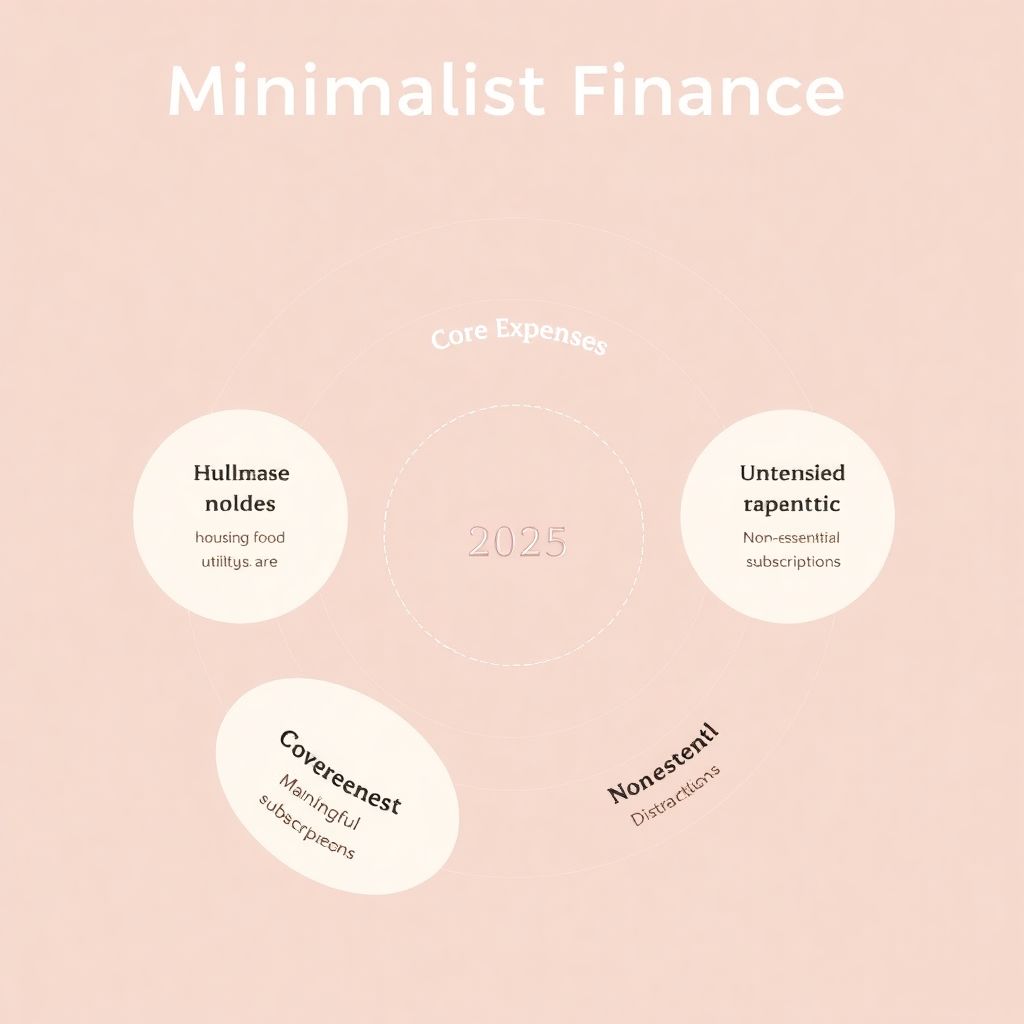Understanding Minimalist Finances: A 2025 Perspective
Minimalist finances refer to a strategic approach to money management that emphasizes clarity, intention, and value-centric decisions. Unlike traditional financial planning that often focuses on accumulation and diversification, minimalist finances prioritize fewer, purposeful financial commitments. In 2025, this concept resonates with a growing demographic disillusioned with consumerism and overwhelmed by financial complexity. It aligns closely with lifestyle minimalism, advocating for streamlined expenses, reduced debt, and conscious spending.
Key Concepts and Definitions
At the core of minimalist finances are three foundational elements: intentional spending, financial decluttering, and values alignment. Intentional spending involves directing money only toward needs and meaningful wants, eliminating impulse purchases. Financial decluttering is the process of reducing the number of financial accounts, subscriptions, and obligations to what is essential. Values alignment ensures that each financial decision reflects personal or familial priorities rather than external pressures or trends.
These principles form a self-reinforcing cycle: by reducing financial noise, individuals gain better clarity, which feeds into more intentional habits.
Visualizing Simplified Financial Systems
Imagine a diagram with three concentric circles. The innermost circle represents “Core Expenses” — housing, food, utilities, healthcare. The middle ring is “Intentional Luxuries” — travel, hobbies, experiences that add value. The outer ring is “Non-Essential Distractions” — unused subscriptions, impulse buys, status-driven purchases.
Minimalist finance aims to shrink the outer ring, optimize the middle, and maintain the inner. The goal isn’t austerity, but efficiency. This framework helps individuals visualize where their money flows and why.
Comparison with Conventional Financial Models

The traditional financial model is rooted in growth, diversification, and wealth maximization. It encourages multiple income streams, complex investment portfolios, and long-term accumulation. While effective for capital expansion, it often results in cognitive overload and decision fatigue. In contrast, minimalist finance favors a leaner approach — fewer assets, but each one chosen with intention and clarity.
Mainstream finance might advocate holding ten different mutual funds; the minimalist might choose two index funds after careful analysis. The trade-off? Reduced potential upside, but also minimized management complexity and emotional stress. The minimalist model is especially appealing in 2025’s unstable economic environment where simplicity often equals resilience.
Global Trends Driving Minimalist Living
Several macro-trends have accelerated the adoption of minimalist finances in 2025. First, the digital detox movement has pushed consumers away from algorithm-driven shopping behaviors. Combined with the rise of ethical consumption, people are now more aware of the ecological and economic impact of their purchases.
Second, the post-pandemic remote work culture has fostered geographic mobility and downsizing. Many professionals are choosing smaller homes, fewer possessions, and reduced lifestyles, which naturally harmonize with minimalist financial structures.
Finally, the increase in inflation volatility and global economic uncertainty has encouraged a shift towards liquidity and flexibility. Instead of investing in illiquid assets or long-term debt instruments, minimalists prioritize cash reserves, low overhead, and adaptability.
Practical Examples of Simplified Living

Consider a freelance designer in Berlin who embraces minimalist finances. She uses one primary checking account, has a single credit card, and contributes monthly to a retirement ETF. Her expenses are categorized into essentials, growth, and joy. She chooses to live in a modest co-living space, bikes to work, and allocates funds toward online courses and occasional travel — aligning costs with values.
Another example is a small family in Tokyo practicing “zero-based budgeting”: every yen is assigned a purpose at the beginning of the month. They’ve eliminated unused gadgets, minimized subscriptions to one streaming service, and share a single car. Their financial goals are tracked via a simple spreadsheet, not complex software.
Transitioning to Minimalist Finances: Strategies and Pitfalls
Transitioning to minimalist finances involves methodical reduction. The first step is a financial audit: identify all accounts, recurring charges, debts, and income sources. Next, employ the ‘one-in, one-out’ rule — for every new financial commitment, remove an old one. Automate savings, consolidate accounts, and consider shifting from active to passive investments to reduce mental load.
However, pitfalls exist. Over-minimizing can lead to underinsurance or missed investment opportunities. There’s also the risk of social friction when lifestyle changes deviate from peer or family expectations. Therefore, it’s crucial to balance simplicity with security.
The Psychological Shift Behind Financial Minimalism

One of the most profound changes in minimalist finance is cognitive. It reframes money as a utility, not a status symbol. This psychological shift allows individuals to detach self-worth from material wealth, reducing anxiety and promoting contentment. Behavioral economists in 2025 note that financial minimalists report higher satisfaction and less regret in spending decisions compared to their consumer-driven counterparts.
This mindset also fosters resilience. By reducing dependency on high income or market performance, minimalists are better equipped to handle economic downturns or personal disruptions.
Conclusion: The Future of Financial Simplicity
As we move through 2025, minimalist finances are not a trend but a reflection of a deeper societal recalibration. Individuals are rejecting financial complexity in favor of clarity, purpose, and autonomy. Technology, once a source of clutter, is being repurposed for financial streamlining — minimalist budgeting apps, robo-advisors with simple portfolios, and AI-driven spending analysis tools are enabling this transformation.
The minimalist path is not about deprivation, but about redefinition — of wealth, success, and sufficiency. In a world saturated with options, the ability to choose less — wisely — may be the most powerful financial tool of all.

